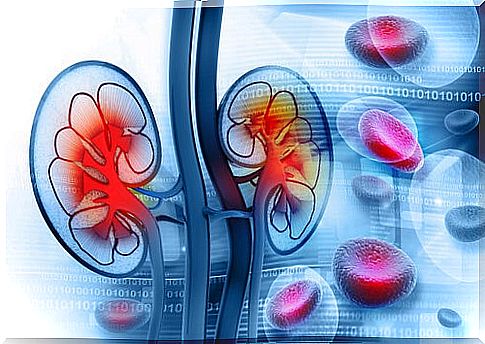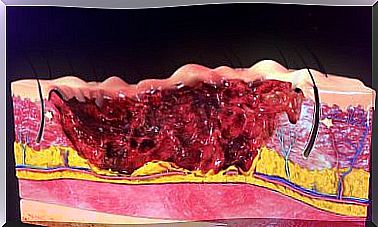Nutcracker Syndrome
Nutcracker syndrome, whose full name is renal nutcracker syndrome, is a rare disease. It occurs when the left renal vein is trapped by other structures, such as a walnut may be inside a nutcracker.
Compression of this vein causes narrowing of the renal vein. For that reason, the pressure in this vein increases considerably. All this leads to the appearance of small abnormal ducts called fistulas, with consequent kidney bleeding. This syndrome, also known as n utcracker from its English word, was first described in 1950.
The disorders caused by this syndrome occur when the left renal vein, which is responsible for transporting purified blood through the left kidney, is compressed. This condition can occur in boys and girls, adolescents and adults. Depending on its intensity, it can be mild or severe. However, in all cases it has treatment.
Nutcracker syndrome symptoms
Although some people are asymptomatic, in many others the signs of this pathology do appear. There is also a group of patients who present severe and persistent symptoms in the urinary tract and genital tract.
One of the most common symptoms is the presence of blood in the urine. This can be seen as a reddish coloration in it, or as drops of blood in each urination; It is the condition called hematuria. Another of the signs is the appearance of varicose veins in the legs and pelvic congestion, or low back pain on one side only.
In the case of women, it has been seen that there may be a decrease in their menstrual cycle, or a dysregulation of it. And in both men and women it can happen that they feel pain when they have sex -dyspaurenia. Another symptom is the loss of protein when passing urine, scientifically called orthostatic proteinuria.
Although it is a fairly benign disease, some of its symptoms can lead to anemia, as in cases where there is loss of blood in the urine.
Presentation types
There are three types of nutcracker syndrome:
- The most common is the above type. This typology occurs when the left renal vein is compressed by the aorta, or the abdominal and mesenteric arteries.
- The posterior type is configured when the left renal vein is trapped by some artery, which is generally the abdominal one, and the vertebrae of the spine.
- The third type is the combined, which is the rarest. It appears when the left renal vein is pinched in its anterior branch by the two arteries, while the posterior part is compressed between the aorta and the column.
Origin of the pathology
The origin of the nutcracker syndrome is unclear. The genetic or hereditary cause has been practically ruled out by the scientific community. Although there is evidence that it occurs frequently among the population of the East.
However, professionals from the Urology Service of the Gregorio Marañón General University Hospital, of the Complutense University of Madrid, have raised the possibility that this disease originates in the embryo itself. It is due to an abnormal separation between the aorta and the superior mesenteric artery.
In the case of infants with nutcracker syndrome, it can be caused by abrupt changes in their body, typical of growth. In such cases, the changes do not occur in a proportionate manner and cause the failure.

Causes of nutcracker syndrome in adults
In adults, this impingement can be due to different causes. Some of them can be:
- Pancreatic tumors.
- Swelling of the para-aortic lymph nodes, which are the ones in front of the base of the spine.
- Tumors behind the stomach or intestines.
- Abdominal aortic aneurysm.
- Duplication of the left renal vein or abnormal fall of the kidney into the pelvis when the person stands up.
There are situations that are associated with the syndrome, such as hyperlordosis – an evident pronounced curve of the spine inwards – and a low body mass index. There seems to be a direct relationship between the low weight of a person and the appearance of the nutcracker syndrome, since the presence of fat in the area facilitates that there is more space between the vein and the kidney.
Nutcracker syndrome in nephrology
The specialist indicated for the treatment and follow-up of the nutcracker syndrome is the nephrologist. Failing that, urologists are also trained to address the problem. If you have any symptoms related to your urine, you should not hesitate to consult a professional in these specialties to remove your doubts.









